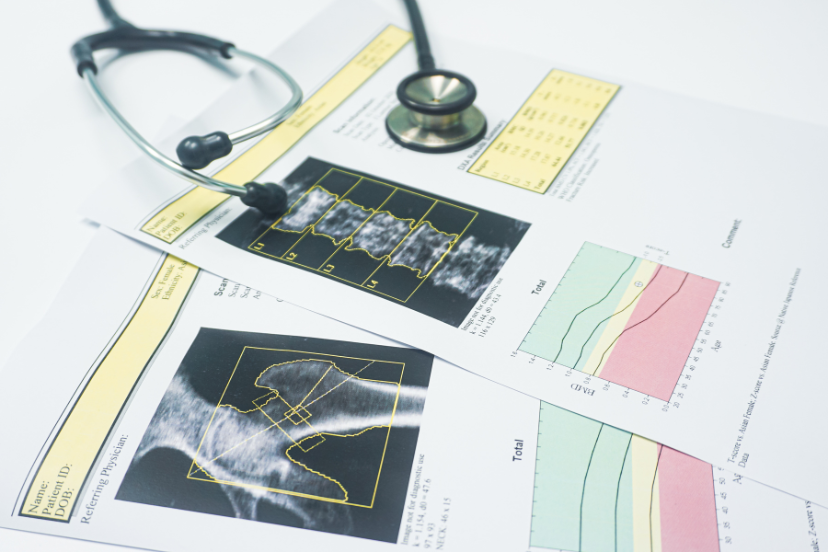Bone Density Measurements: Understanding Your Skeletal Health
Introduction
Welcome, dear readers, to a journey through the intricate world of bone density measurements. Have you ever wondered what lies beneath the surface of your bones? How strong are they? Are you at risk of osteoporosis? Fear not, for we are here to unravel the mysteries surrounding bone density measurements. In this comprehensive guide, we’ll delve into the significance of bone density, explore various measurement techniques, address common queries, and equip you with the knowledge to safeguard your skeletal health.
Understanding the Foundation
Bone density measurements, often referred to as bone mineral density (BMD) tests, play a pivotal role in assessing bone strength and integrity. But what exactly do these measurements entail? How are they conducted, and why are they essential for your well-being?
Bone density measurements quantify the amount of mineral content within your bones, primarily calcium and phosphorus. These minerals contribute to bone density, indicating their strength and ability to withstand pressure. Essentially, the denser your bones, the stronger they are, reducing the risk of fractures and osteoporosis.
Why Does It Matter?
In a world where osteoporosis affects millions worldwide, understanding your bone density is crucial for early detection and prevention. But why exactly do bone density measurements matter, and who should consider undergoing these tests?
- Early Detection of Osteoporosis: Bone density measurements serve as a proactive approach to identifying osteoporosis and assessing fracture risk, especially in individuals over 50 or those with risk factors such as low body weight or a family history of osteoporosis.
- Monitoring Bone Health: For individuals undergoing treatments that may affect bone density, such as long-term steroid use or certain medical conditions, regular bone density measurements help monitor bone health and adjust treatment plans accordingly.
- Preventive Measures: Armed with knowledge of their bone density, individuals can take proactive steps to maintain or improve bone health through lifestyle modifications, dietary changes, and targeted exercises.
The Methods
Now that we grasp the significance of bone density measurements, let’s explore the methods used to assess bone health. From traditional techniques to advanced technologies, there’s a myriad of approaches available to gauge bone density accurately.
- Dual-Energy X-ray Absorptiometry (DEXA):
- Principle: DEXA utilizes low-dose X-rays to measure bone density at specific sites, typically the hip and spine.
- Accuracy: Considered the gold standard for bone density assessment, DEXA provides precise measurements with minimal radiation exposure.
- Quantitative Ultrasound (QUS):
- Principle: QUS measures bone density by analyzing the speed of sound waves passing through bones, usually at the heel bone.
- Portability: Unlike DEXA, QUS devices are portable and non-invasive, making them suitable for screenings in various settings.
- Peripheral Quantitative Computed Tomography (pQCT):
- Principle: pQCT employs computed tomography to assess bone density and structure at peripheral sites like the forearm.
- Detailed Analysis: In addition to measuring bone density, pQCT provides insights into bone geometry and composition, aiding in research and clinical assessments.
Frequently Ask Questions:
- What factors influence bone density?
- Answer: Several factors, including genetics, age, gender, hormonal levels, dietary habits, physical activity, and certain medical conditions, can influence bone density.
- Is bone density testing painful?
- Answer: No, bone density testing is painless and non-invasive, typically lasting 10 to 30 minutes, depending on the method used.
- At what age should one consider bone density testing?
- Answer: While bone density testing is commonly recommended for postmenopausal women and older adults, individuals with specific risk factors or medical conditions may undergo testing at a younger age.
- Can medications affect bone density measurements?
- Answer: Yes, certain medications, such as corticosteroids, anticonvulsants, and hormone therapies, can impact bone density, warranting regular monitoring and adjustments.
- How often should bone density measurements be repeated?
- Answer: The frequency of bone density testing depends on individual risk factors, medical history, and treatment plans. In general, testing may be repeated every 1 to 2 years to monitor changes.
- Are there any lifestyle changes to improve bone density?
- Answer: Yes, adopting a balanced diet rich in calcium and vitamin D, engaging in weight-bearing exercises, avoiding smoking and excessive alcohol consumption, and ensuring adequate sun exposure can promote bone health.
Conclusion
In conclusion, bone density measurements serve as invaluable tools in safeguarding skeletal health and preventing osteoporosis-related complications. By understanding the significance of bone density, exploring diverse measurement methods, and addressing common queries, individuals can take proactive steps towards maintaining strong and resilient bones.
Remember, your bones are the foundation of your body, providing support, protection, and mobility. Investing in bone health today ensures a vibrant and active tomorrow. So, embrace the journey of bone density measurements, prioritize preventive care, and pave the path to a life filled with strength and vitality.




